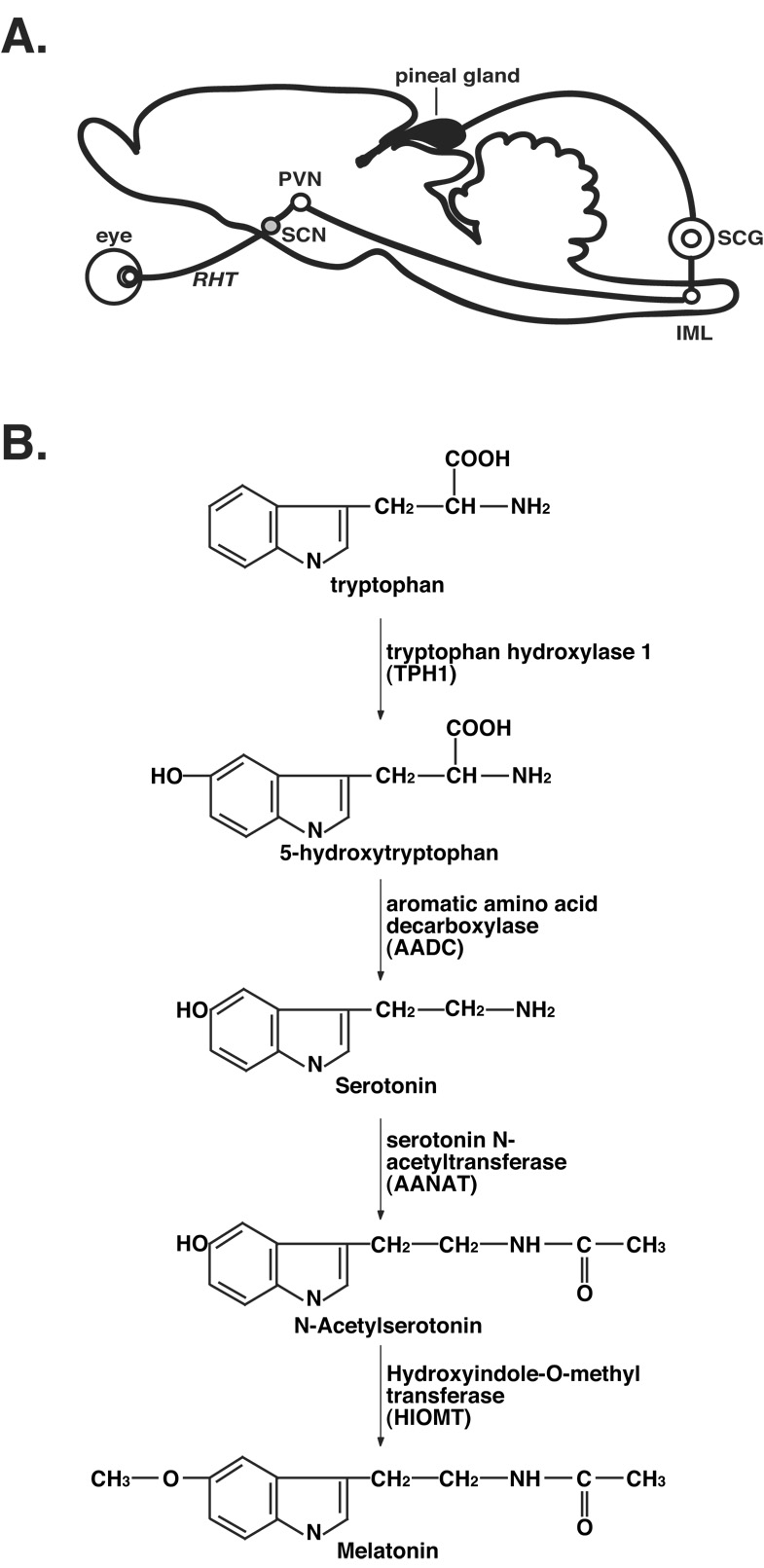Figure 1. Pineal melatonin synthesis.

A. Melatonin production in the pineal gland is controlled by the circadian pacemaker in the SCN via a multi-synaptic pathway that includes the suprachiasmatic nucleus (SCN), the paraventricular nucleus of the hypothalamus (PVN), intermediolateral nucleus of the spinal cord (IML), and the superior cervical ganglion (SCG). Light signals from the eye, transmitted to the SCN via the retinohypothalamic pathway (RHT), entrain the circadian clock in the SCN, which generates the circadian rhythms of melatonin production in the pineal gland. B. Melatonin is synthesized from tryptophan by four enzymes: tryptophan hydroxylase 1 (TPH1), aromatic amino acid decarboxylase (AADC), arylalkylamine N-acetyltransferase (AANAT), and hydroxyindole-O-methyltransferase (HIOMT). In our studies, we routinely collect data for serotonin, N-acetylserotonin, and melatonin in a single HPLC chromatogram.
